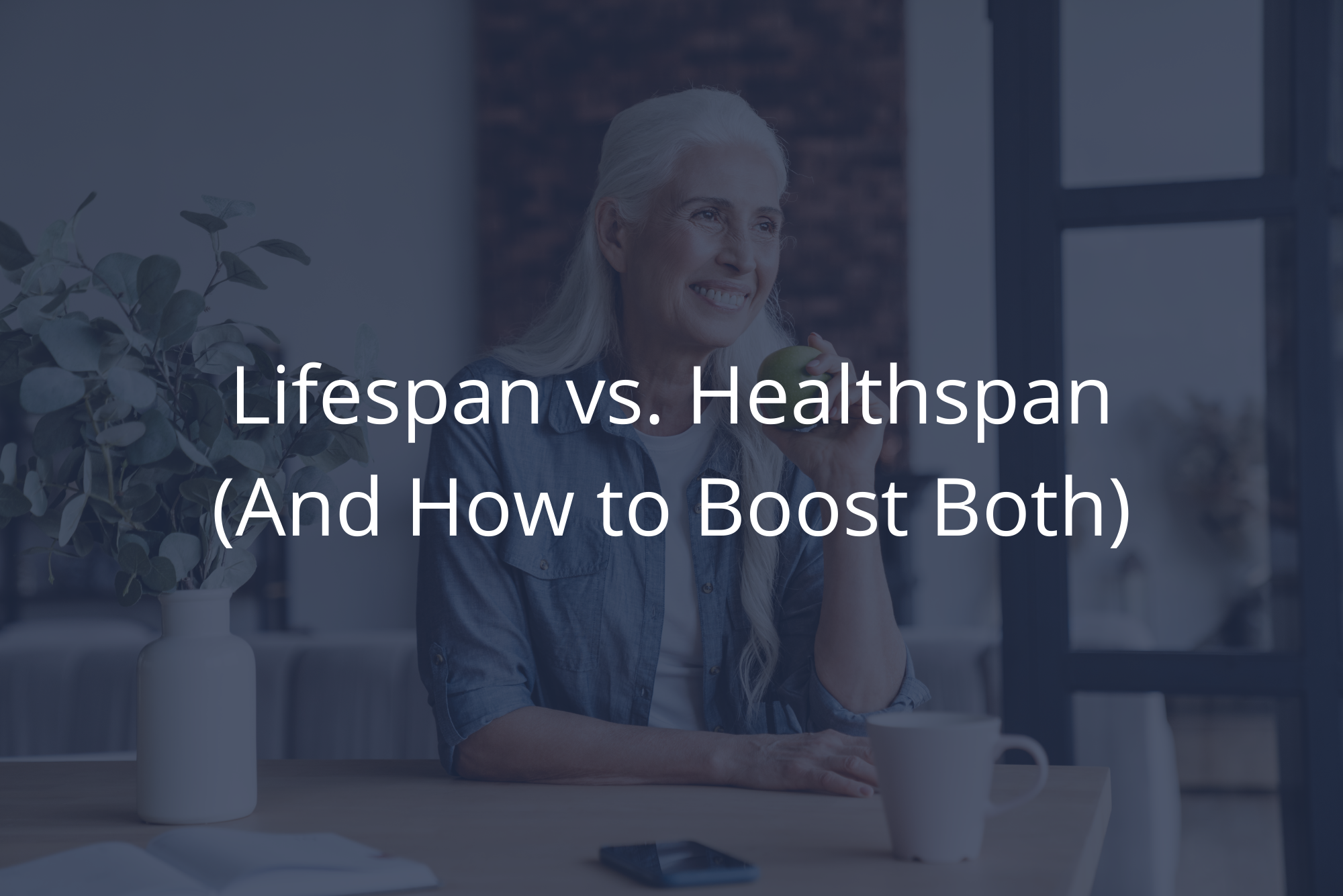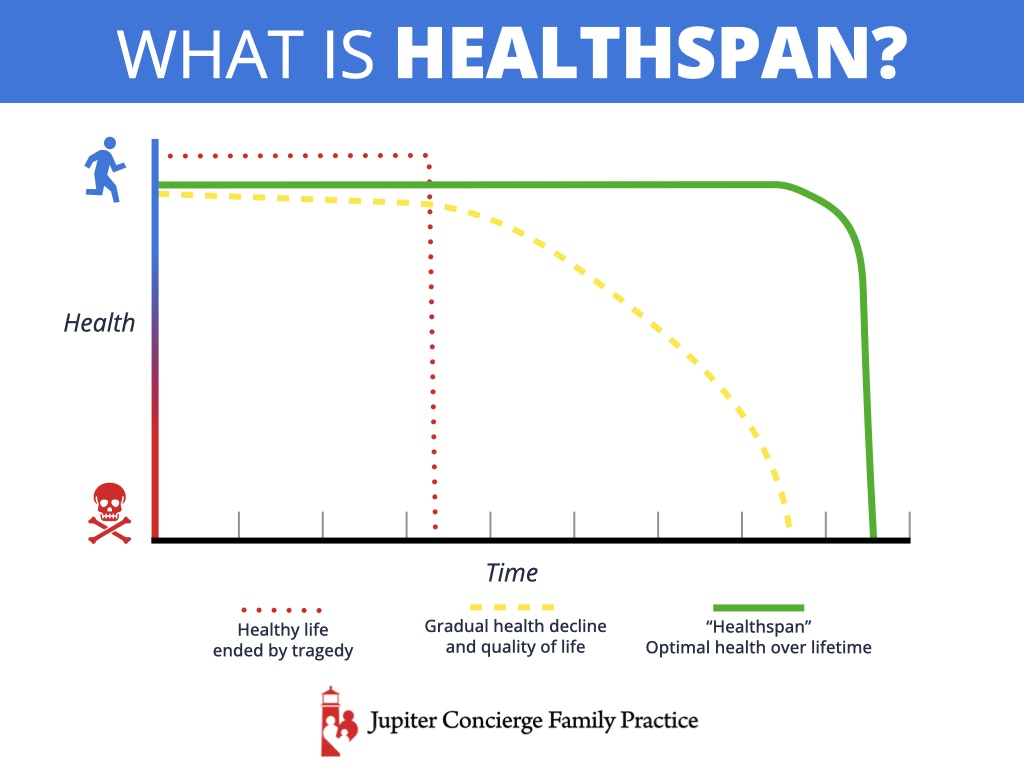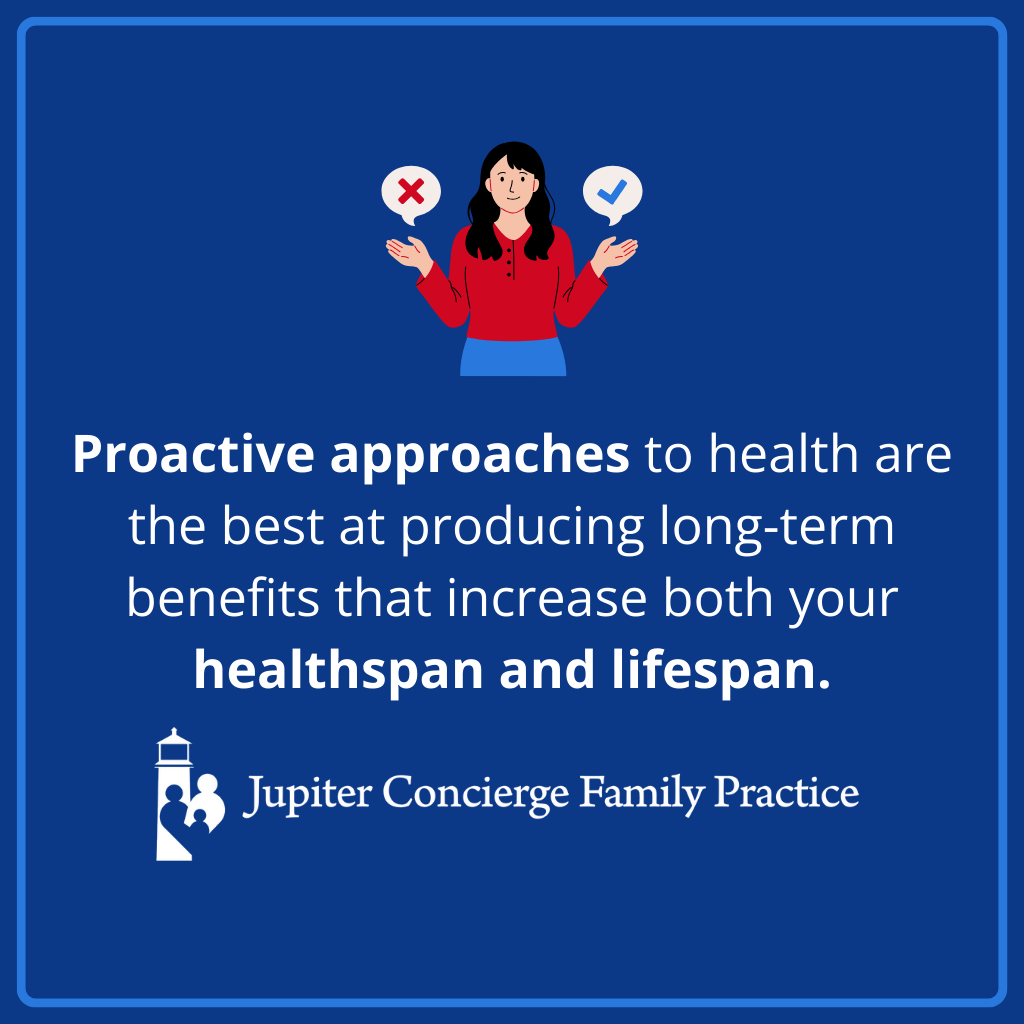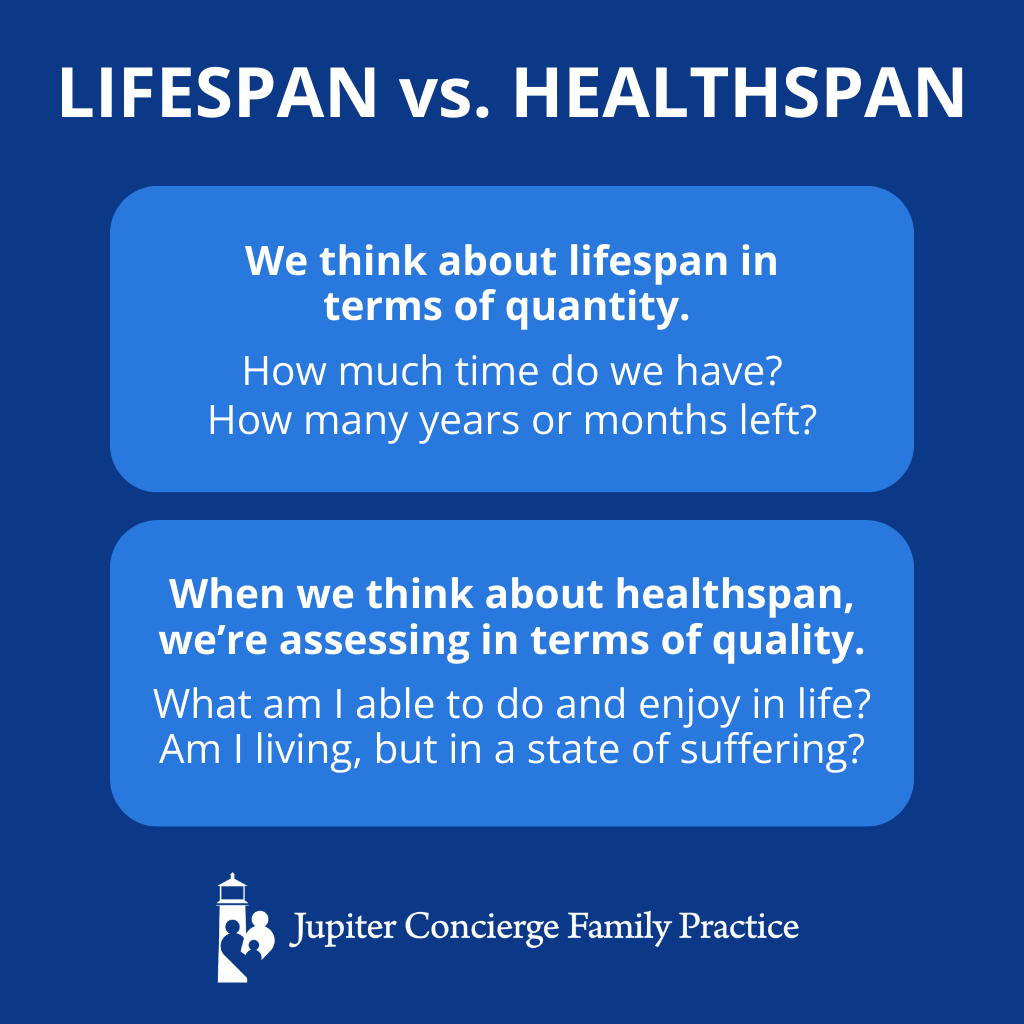
We often aim for longevity as the ultimate health goal, but there’s something equally — if not more — important than lifespan: healthspan. Today, we explore the differences between healthspan and lifespan and how to increase both.
We think about lifespan in terms of quantity. How much time do we have? How many years or months are left?
When we think about healthspan, we’re assessing in terms of quality. What am I able to do and enjoy in life? Am I living, but in a state of suffering?
How do we weigh lifespan vs. healthspan? In my practice, I encourage reframing longevity. Instead of pitting lifespan vs. healthspan, think of it as a combination: lifespan and healthspan.
When we overlay these two lenses, the goal becomes to die as healthy as possible, as late in life as possible. We don’t have to be young to die healthy and we don’t have to suffer through old age.

Conventional Medicine Focuses on Lifespan
As a functional medicine physician, I focus on both quantity (lifespan) and quality (healthspan). Of the two, my emphasis is more on healthspan. This is in contradistinction to the overarching view of modern medicine, which primarily focuses on lifespan at all costs.
Right now, modern medicine pours its considerable resources into extending the lives of patients who already have an established disease. Modern medicine does this through treatment or management of the disease process.
Although this is necessary, it doesn’t promote “longevity” in the terms we defined above. It doesn’t take healthspan into consideration, and it’s much less effective than addressing the root cause of dysfunction before it leads to disease.
Here’s an example of what I mean. A 65-year-old comes to the doctor, experiencing chest pain or fatigue related to activity. A medical evaluation discovers blocked blood vessels, which require treatment with medication or surgery. This may stabilize the situation today, but without a lifestyle change, it’s simply a temporary fix. In an even worse case, the initial cardiac event may be a heart attack that causes permanent damage.
Another illustrative scenario is stroke. Let’s imagine a 65-year-old presents at the doctor with leg numbness, difficulty finding words, and fainting episodes. They’ve had a stroke. The conventional approach would be to put that patient on a large dose of blood thinners and look for reversible procedures to remove blood clots from the brain. Again, this stabilizes the patient, but the initial stroke may have significantly reduced their functionality and dramatically altered their quality of life.
When the disease process reaches this point, the chance of full recovery and the ability to live at the highest quality of life reduce dramatically. But that’s how our healthcare system is set up. It focuses not on prevention and healthy lifestyle habits earlier in life but on reactive care for full-blown disease.

How to Get Ahead of the (Conventional) System
Conventional medicine is excellent at preserving life in emergency situations, but medicine is more than just emergencies. However, it’s telling that the symbol we often associate with medical care in our culture is the hospital, or perhaps the ambulance.
Medical care is more than the ambulance and the hospital. It’s also the gym, the grocery store, vitamins, and what time you go to bed. Each of these has a long-lasting, tangible effect on your healthspan.
The secret to longevity, of course, isn’t a secret at all. It’s a series of lifestyle choices that support the Four Pillars of Health: Sleep, Exercise, Nutrition, and Stress Elimination.
Proactive approaches to health are the best way to produce long-term benefits that increase both your healthspan and lifespan. The truth is, you can absolutely live healthy and be active well into your 80s. I see it all the time with my patients. But it’s not a sudden outcome. What you do in your 60s dictates what happens in your 80s. And what you do in your 40s dictates what happens in your 60s.
When you focus on proactive pillar support today, you take concrete, practical action to improve your quality and quantity of life over the next 20 years.

Lifespan vs. Healthspan: Conclusion
A long life isn’t a marker of its quality. Focusing on your quality of life —healthspan — in concert with your quantity — lifespan — puts you in the driver’s seat to a better road ahead. Most people over 40 notice that their energy begins to change, but there’s still time to alter your trajectory.
While early adoption of healthy lifestyle behaviors and habits helps prevent disease and maintain optimal health in old age, don’t despair if you’re late to this particular party. Start now.
It’s like that saying about planting trees: “The best time to plant a tree is 30 years ago. The second-best time is today.
